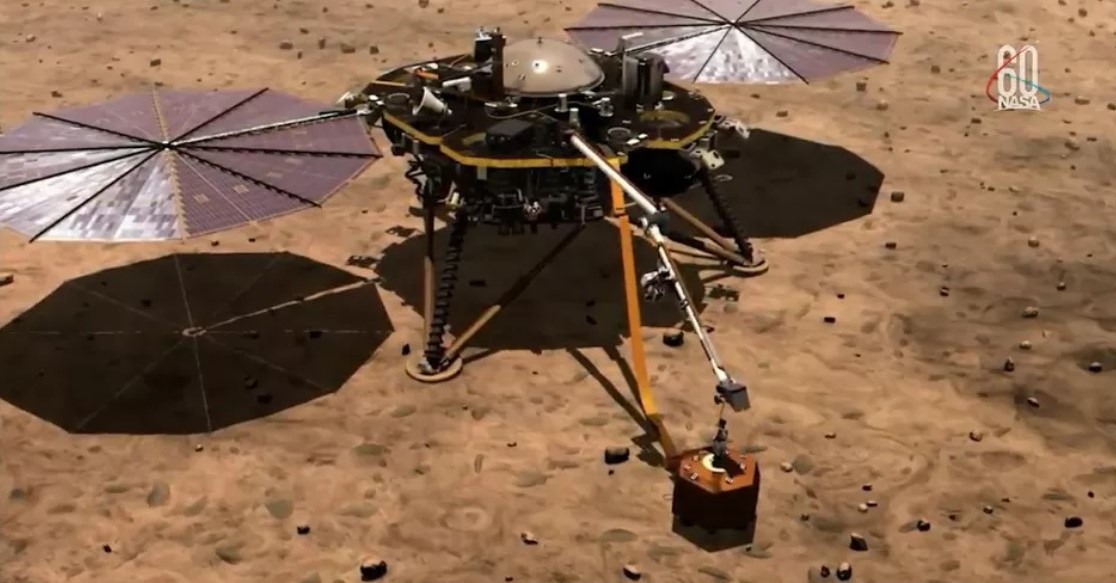Exploring Planets Beneath The Surface
Telescopes may let us gaze across the greatest distances of space and time, but when it comes to seeing things like planets and stars, they really only show us what’s skin-deep.
Earth-based telescopes, and telescopes toted along by robotic spacecraft as they explore outward, have shown us breathtaking and awe-inspiring visions of places like Mars, Jupiter, and the sun–but only their outer surfaces. What’s inside them?
Once our curiosity asks a question like that, there’s no stopping someone from finding a way to answer it. There’s more than one way to skin a planet….
Since the first probe swung by Mars in 1965, the Red Planet has been visited by a score of spacecraft–flyby missions, orbiters, landers, and rovers. These robots made various measurements of soil composition, atmospheric and weather conditions, and took pictures of the surface, from space and on the ground.
Diving Deeper

NASA’s InSight lander placing its seismometer “ear” to the ground on Mars.
But one of them is on a mission to look deeper, to see beneath the planet’s skin and probe its interior as no telescope can. NASA’s InSight lander is equipped with a seismometer that listens for “marsquakes”–seismic waves echoing around Mars’ interior. The idea is that by studying the properties of seismic waves that “ring” through Mars’ rocky inside layers, a picture of Mars’ guts can be developed–maybe like how a fetus in a mother’s womb can be “seen” with an ultrasound scanner.
The same technique has been used to get a picture of Earth’s interior, with seismometers positioned around the globe measuring the echoes of tremors as they buzz through Earth’s mantle and core. Even the interior of our sun has been scried through the seismic waves ringing and echoing through its layers of plasma.
NASA’s Juno spacecraft has found yet other ways to skin a planet. Circling Jupiter in a wild, loopy orbit that takes it very close to the giant planet’s cloud tops every 53 days, Juno measures Jupiter’s powerful magnetic field to divine the processes and conditions that generate the magnetism deep within the interior. Juno also measures “bumps” in Jupiter’s gravitational field as it flies by, sensing atmospheric structures hidden below the cloud tops in a cosmic robotic form of reading Braille.
The natural world has plenty more ways of showing us its wonders than through visible light shining into human eyes. We have ears, too, and a sense of touch. Giving our robotic explorers similar expanded senses allows us to probe where eyes will never pry.




